Local historian seeks restoration of Lake Wales house in danger of demolition
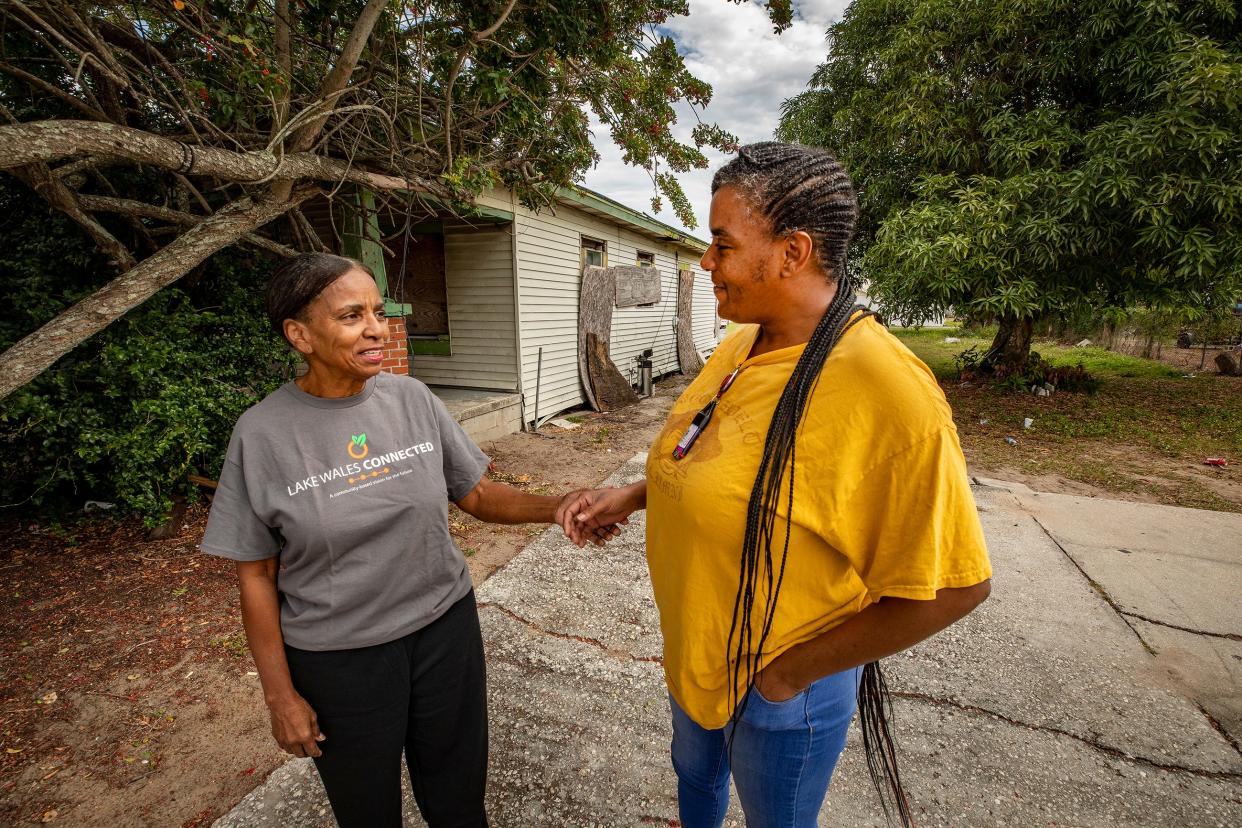
LAKE WALES — Is it an eyesore or a historic treasure?
Last year, the city of Lake Wales sought to have a house in the Northwest Neighborhood demolished after it had accumulated a series of violations, declining to the point that it was uninhabitable.
The 1,300-square-foot house at 244 D St. probably would have disappeared by now if not for the efforts of Dorothy Scott Wilson, a local historian who is pushing to have the structure restored and recognized as the former home of one of the city’s first Black families.
Wilson, who grew up in a companion house one street over, recently sent a letter to Lake Wales Deputy Mayor Robin Gibson, asking if the city’s Community Redevelopment Agency might contribute toward restoration of the Colvin House, built in 1920 and identified with its original owners, Donnie and Anna Colvin.
In her note to Gibson, Wilson included a reminder that last year the Florida Trust for Historic Preservation included the Colvin House on its “11 to Save,” an annual list of sites with historic significance in danger of neglect or destruction. The nonprofit describes inclusion on the list as “a starting point for advocacy and education efforts” intended to promote a collaborative effort to identify individual solutions for each property.

Lake Wales so far has made no commitment to the potential restoration project.
“We’ve been discussing the Colvin House, and it being recognized by The Florida Trust’s 2022 11 to Save,” city spokesperson Eric Marshall said by email. “It’s definitely a great opportunity for us. It is privately owned, and we’re still doing some fact finding to determine next steps.”
The house’s owner, Nashena Walker, is the great-granddaughter of Donnie Colvin, who died in 1932, and Anna Colvin, who died in 1966. They are buried at Willow Lawn Cemetery, about a mile away.
Walker officially took ownership of the house in 2011, according to county property records, though she stated at a Code Enforcement Board meeting that she only learned of her ownership in 2018.
Standing in front of the house on Wednesday morning, Walker said she hopes to avoid seeing the it demolished. She said that her father and aunt were born on the property.
“So it’s more of a family history to me, and I'm the only living bloodline that’s still living,” she said. “It’s got a lot of history and memories, and I just don’t see myself getting rid of it.”
Colvin was prominent figure
Even if it were in better condition, the home would be considered modest by today’s standards. It reflects the bungalow-style architecture common to Florida in the 1920s, featuring a low-pitched, shingled roof with an etched gable and elongated eaves.
County property records describe it as having two bedrooms, though Walker said it had been modified into a four-bedroom, one-bathroom house. She said she last lived in the home in 2018 and now resides elsewhere in the Northwest Neighborhood, a traditionally Black section of Lake Wales.
But Wilson, a retired state employee and director of the nonprofit Genealogy 101 at the Library, said the house qualified as large and stately for the time, especially in a Black neighborhood. No historical material seems to identify the builder of the Colvin House.
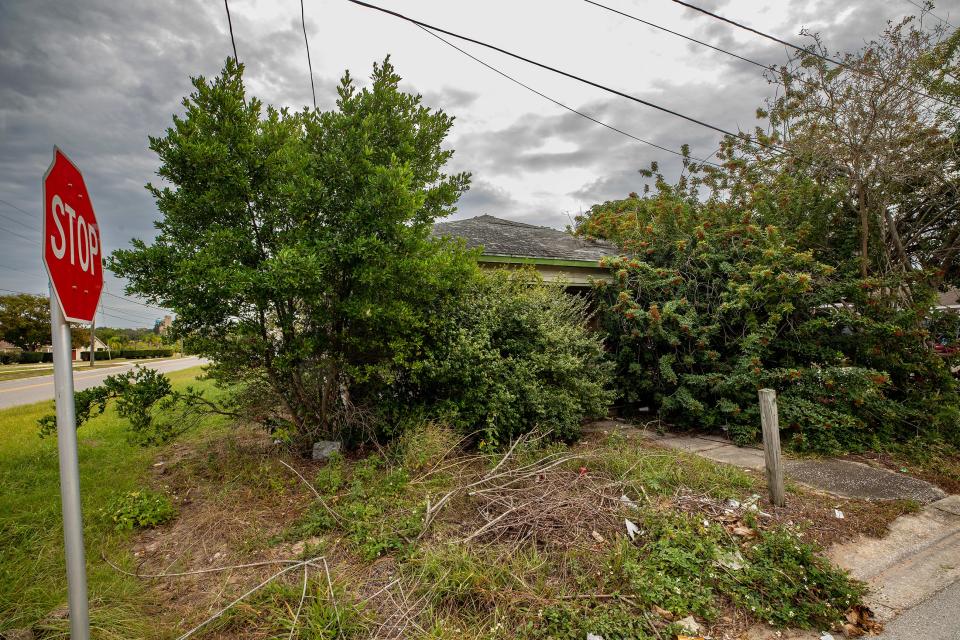
In her nominating materials to the Florida Trust for Historic Preservation, Wilson emphasized the status of Donnie and Anna Colvin as Black pioneers in Lake Wales, less than a decade after its founding in 1911 and a few years after its incorporation.
Donnie and Anna Colvin married in Alachua County in 1918 before coming to Lake Wales, according to “Crown Jewel of the Highlands: Lake Wales, Florida,” a 1983 history by Janyce Barnwell Ahl. The book describes Donnie Colvin as one of the city’s earliest Black businessmen, reporting that he sold lots for the Lake Wales Land Company, which first developed the city.
Colvin also cleared land for citrus groves and served as a foreman in charge of recruiting other laborers to Lake Wales, the book reports. And he worked for the family of Irving A. Yarnell, a retired banker, in nearby Babson Park at a time when “the first lawn mowers were pulled by horses,” Ahl writes.
The book includes a black-and-white photo of Colvin, seen from behind, standing beside “his mule-drawn lawn mower.”
The Colvins had seven children, identified by Ahl as dispersing to such places as Chicago; Austin, Texas; Wilmington, Delaware; and Buffalo, New York. Wilson said that at least some of the offspring received college degrees.
One of the couple’s children, Jeresa Colvin Austin, became a teacher, working at the segregated Roosevelt School in the Northwest Neighborhood and later becoming one of the first Black teachers at Polk Avenue Elementary School. She served as the unofficial historian for the Northwest Neighborhood, where she continued to live until her death in 2003, The Ledger reported at the time.
Jeresa, named the city's first Black Pioneer of the Year in 1991, married James Austin, a civil rights activist and Lake Wales’ second Black city commissioner and first Black mayor. A community center in the neighborhood is named for Austin.
Wilson, whose family home on E Street has been replaced by a small apartment building, said that Anna Colvin and possibly Donnie were members of the Gullah people, descendants of West and Central Africans enslaved and bought to North Carolina, South Carolina, Georgia and Florida to labor on the coastal rice, cotton and indigo plantations.
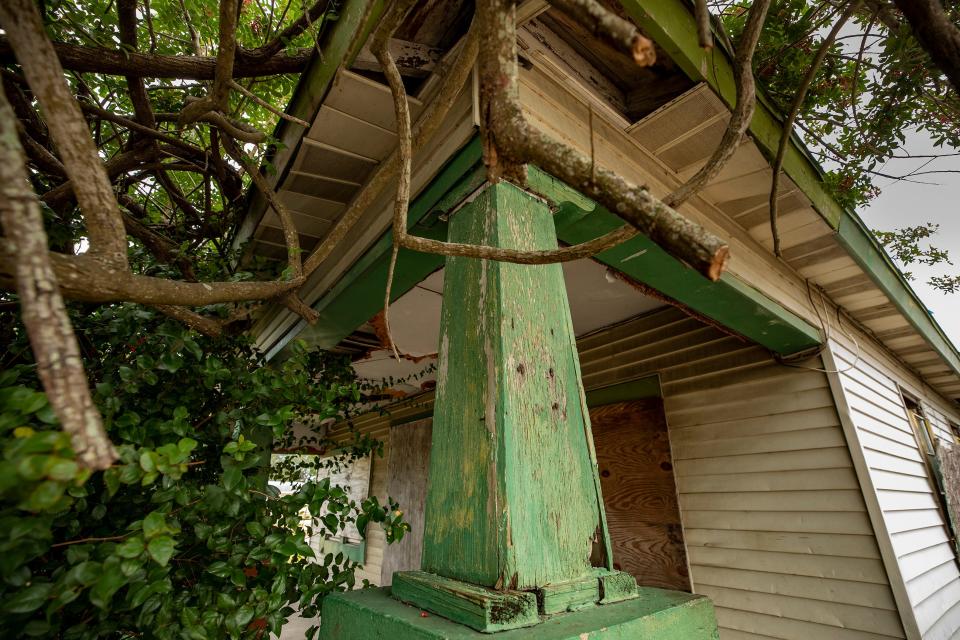
The isolation on coastal plantations and barrier islands allowed the Gullah Geechee to retain many of their indigenous African traditions, and they created a creole language, Gullah (also called Geechee), spoken nowhere else in the world, according to the National Park Service.
Wilson, born in 1950, said that several residents of the Northwest Neighborhood during her childhood were known to have Gullah ancestry.
“And they always had a distinct way of talking,” Wilson said. “It was as if you didn't really understand what they were saying. We young people called it ‘Ugandan.’ It sounds different. It sounds English; it sounds French. It sounds all kinds of things in one voice.”
Florida Trust for Historic Preservation emphasized the Colvins’ status as “Gullah Geechee settlers,” in its description of the house for last year’s “11 to Save” list.
City staff recommended demolition
Descendants of the original owners maintained the house at the corner of D Street and Washington Avenue in “meticulous condition” for decades, Wilson said. At some point, though, the house began a decline into such a dilapidated state that the Lake Wales Code Compliance Division took notice and began issuing violations.
There is no shortage of obvious infractions. The roof is severely degraded, with a hole near the peak. Rotted wood abounds on the exterior walls, allowing sizeable gaps to form at the bottoms and tops. At least one window pane is broken, and most windows are covered with weathered sheets of plywood. Brazilian pepper and cherry laurel trees obscure the front of the house, thrusting branches toward the front porch.
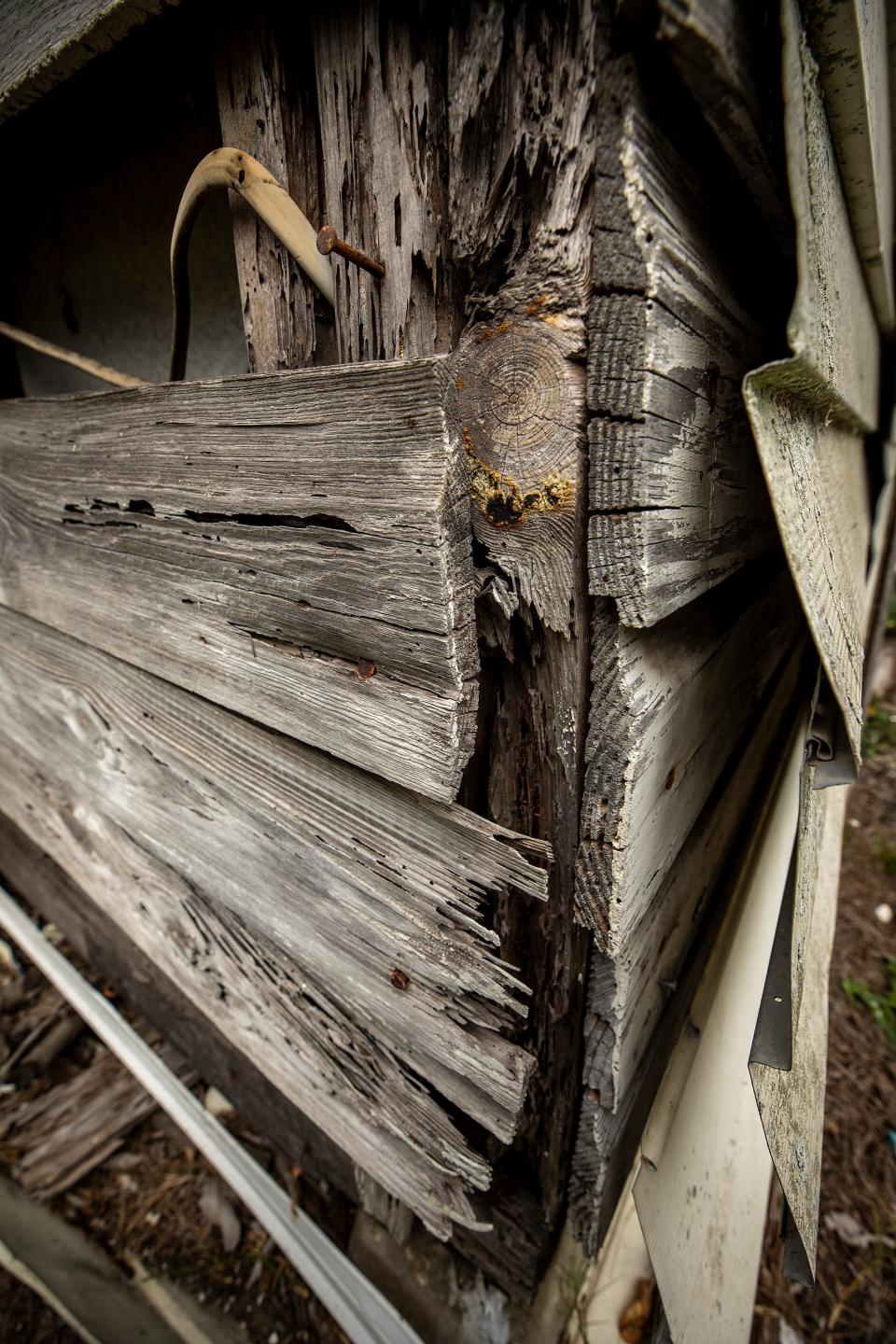
The yard, which extends to an undeveloped lot behind the house, appeared overgrown Wednesday morning. Wilson said she has arranged for students from Roosevelt Academy, located in the Northwest Neighborhood, to maintain the yard.
At a meeting in February 2022, the Code Enforcement Board discussed as old business the multiple violations levied against the property. The board again addressed the property at its March meeting, having received a recommendation from city staff to initiate the demolition process and to take necessary steps for the abatement of the house, which it described as unsafe and uninhabitable.
At the March 2022 meeting, Walker told board members that she was trying to either sell the house or arrange for it to be demolished, and she requested additional time. She mentioned working with Scott to have the structure declared a historical site. A lengthy discussion ensued, in which a city inspector said that administrative fines had accumulated, reaching nearly $1.3 million.
Lake Wales embraces long-term plan aiming to create Big Green Network around city
The board voted to give Walker 10 days to clean up debris and gave her a deadline of Sept. 10, 2022, to either demolish, sell or remodel the house.
Jose Lozado, Lake Wales’ code compliance supervisor, said a demolition order still stands but the Code Enforcement Board directed his office to delay enforcing it as they wait to see if the house received protected historic status.
Nonprofit says it's worth saving
The Florida Trust for Historic Preservation noted the vulnerable status of the house in the description in its “11 to Save” list for 2022.
“Now in deterioration, the nominator seeks to raise awareness to protect and restore this bungalow structure, which is representative of the Northwest community’s original built environment and historically significant story,” the description reads.
The organization began issuing its annual “11 to Save” list in 2014. Other structures recommended for preservation since then include the Hollywood Beach Hotel in Broward County, the original Plant City High School, the Old Town Commercial District in Lake Worth and abandoned African-American cemeteries statewide.
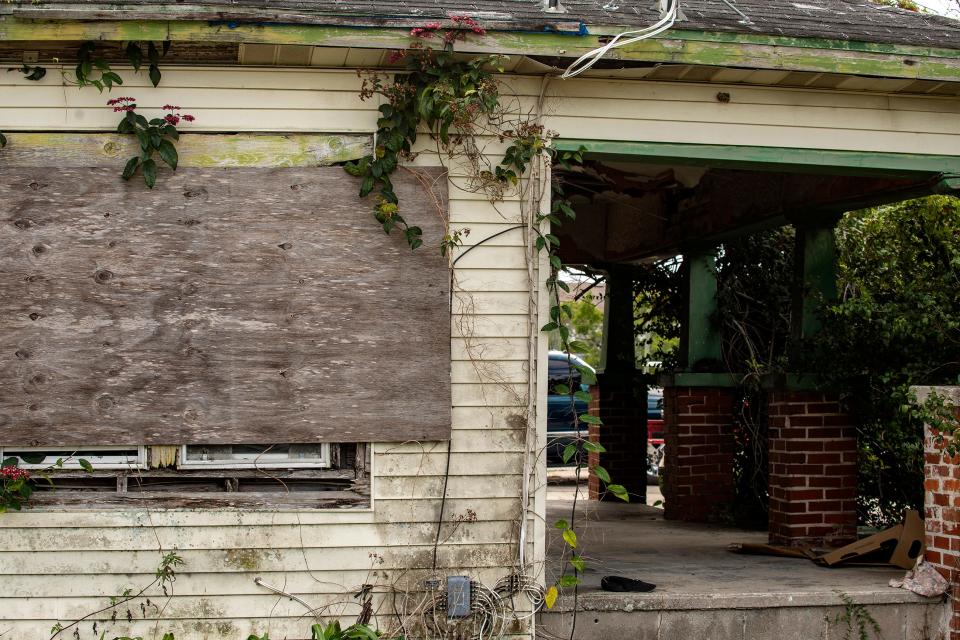
Inclusion on the Florida Trust’s list is not a guarantee against oblivion. The group drew attention in 2019 to the Deauville Beach Resort in Miami Beach, whose Napoleon Ballroom hosted the Beatles’ performance for the Ed Sullivan Show in 1964. Nevertheless, the hotel was demolished last year.
Ennis Davis, vice president of the Florida Trust for Historic Preservation, said the organization receives nominations for the list each year and a committee assesses the candidates before selecting 11 to highlight. The committee includes board members, who have specialties in such areas as architecture, engineering, history and urban planning, as well as volunteers.
The Trust helps owners or managers of nominated sites with guidance on seeking grants or other resources that can enable preservation, said Davis, a Winter Haven native and an urban planner now living in Jacksonville.
“It’s an opportunity for that site and the Trust to work together to promote and share its story so that more people are aware of that site, which helps build support and momentum to preserve or rehabilitate those pieces of property, or at least share that story that they have,” Davis said.
Though some sites placed on the “11 to Save” list are grand in size or well known, Davis said it is not unusual to promote a small and unknown property, such as the Colvin House.
“What someone deems as insignificant to one population may not be actually true, if you talk to and involved that specific population,” Davis said. “So, even though this house is a small house, the significance isn't so much the structure, it’s the story behind the house, the people behind the house, what it represents in terms of what that area is now, being one of the first structures in the Northwest section, Lake Wales, the family being Gullah Geechee settlers. … So that history around the house is really the history of how that neighborhood came to be.”
A symbol of neighborhood
The question is whether the Colvin House can be restored. In a code enforcement meeting last year, Vice Chair Ralph Marino suggested that the structure would have to be taken down to the studs and that he didn’t think the foundation was sound.
Wilson said she has consulted an engineer who told her the house could be restored for $60,000. She said she is confident the house can be saved, citing her own rehabilitation of another house in the neighborhood that was in damaged condition. Wilson said she has secured commitments of material from the Home Depot and YellaWood worth thousands of dollars.
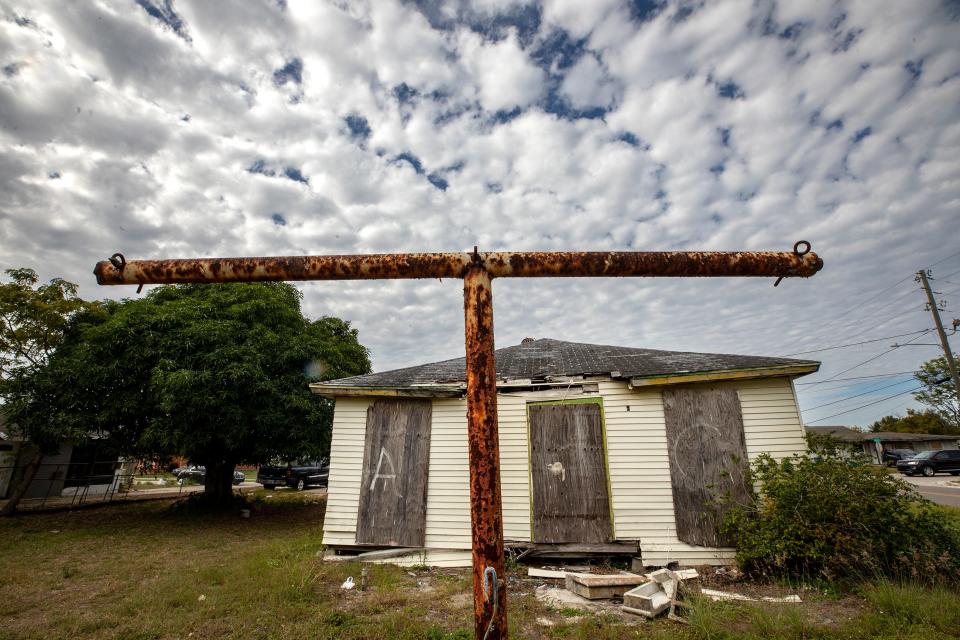
Supporters of the Colvin House might draw inspiration from the saga of the L.B. Brown House in Bartow. That structure, believed to be perhaps the last intact house built by a formerly enslaved person, was decayed and on the verge of demolition in 1990s when a nonprofit formed to save it.
The Victorian-style structure, artfully restored, now serves as a museum and the focus of an annual festival celebrating Black history and heritage.
Wilson sees restoration of the Colvin House as a potential component of Lake Wales Connected, a longterm plan for revitalization of downtown and the Northwest Neighborhood. The city commissioned Dover, Kohl & Partners to develop the plan, derived from an original city design created by the famed landscape architect Frederick Law Olmsted Jr. in 1931.
“So, in these houses, if we put this one back and let it be historic, and put those little shotgun houses in there and let them be historic, what it will eventually do – with this Lake Wales Connected Plan, it’s a beautiful program … as you grow, you have your little map,” Wilson said. “And as you go around and look at these places, you get a chance to see some of these things, and Colvin, he was the first ethnic man to do all this work-related stuff and guide people into good jobs and that kind of thing. And so, his (house) would be significant.”
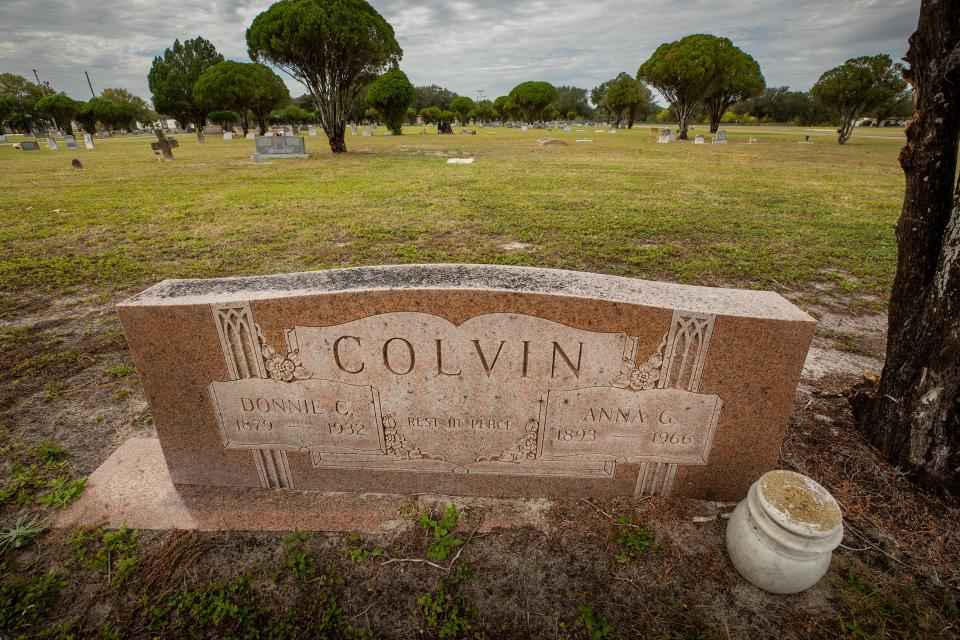
Wilson said she mentioned the house to a staff member from the office of Rep. Darren Soto, D-Kissimmee, who referred her to an official with the National Park Service’s Technical Preservation Services. The official has provided advice on seeking a historic designation for the property, she said.
Like Davis, Wilson considers the house important not just in its own right but as a representation of the Northwest Neighborhood. Lake Wales erected a historical marker at Stuart Park, on the edge of the community, titled “The Historic Corridor.” The text describes how the extension of a railroad line to that site in 1911 spurred the creation of Lake Wales.
“The Historic Corridor extends southward, along the railroad track, from this park to the original town, which, in 1989, was designated as a National Register Historic District,” the sign reads. It mentions historic structures to the south: the E.C. Stuart bungalow, the Seaboard Airline Freight Depot; and the Atlantic Coastline Passenger depot, all of which have been restored as museum properties.
Wilson hopes to see the Colvin House incorporated into Florida’s Black Heritage Trail, administered by the Division of Historical Resources. The trail contains seven sites in Polk County, including the Roosevelt School (now Roosevelt Academy), which opened in 1937 and operated for decades as the designated school for Lake Wales’ black children.
The National Park Service oversees the Gullah Geechee Cultural Heritage Corridor, which runs from Pender County, North Carolina, to St. John’s County in Florida. But the corridor centers on barrier islands and sites with 30 miles of the East Coast, an area that doesn’t encompass Lake Wales.
Gary White can be reached at gary.white@theledger.com or 863-802-7518. Follow on X @garywhite13.
This article originally appeared on The Ledger: Historian seeks restoration of 1920 house in Lake Wales NW section

